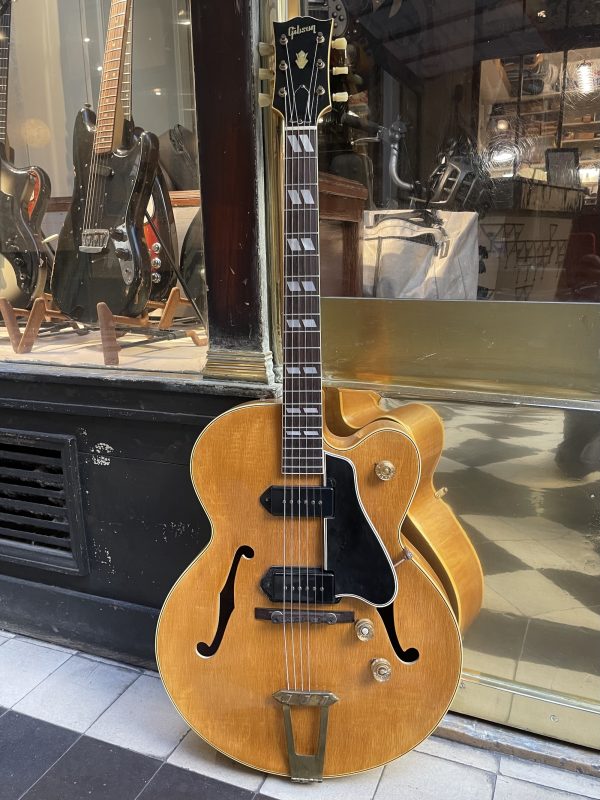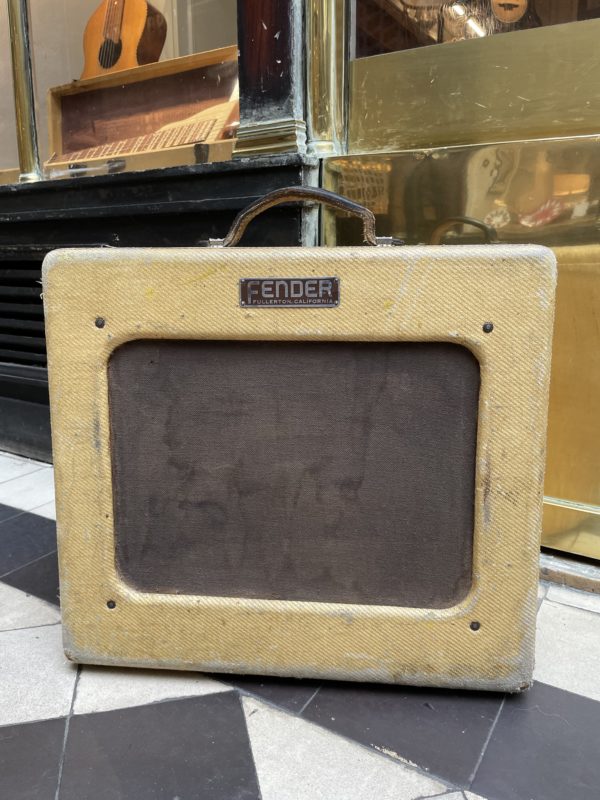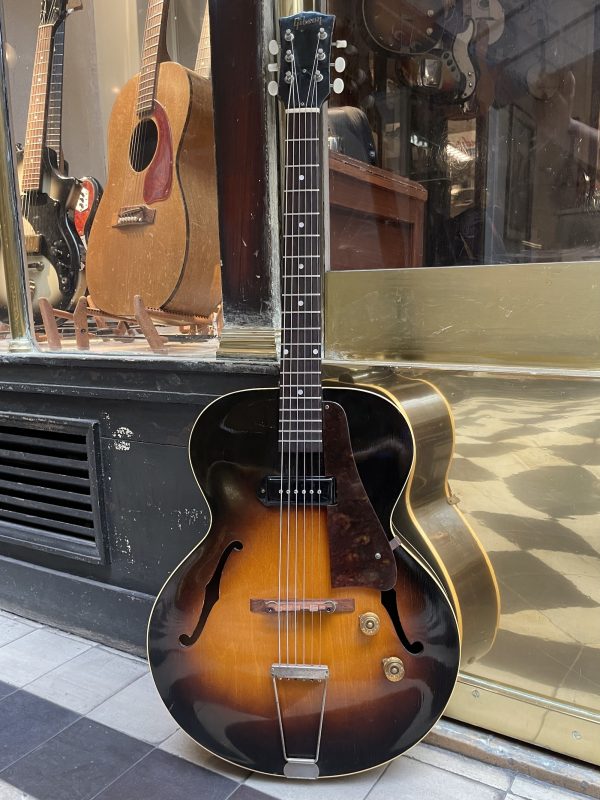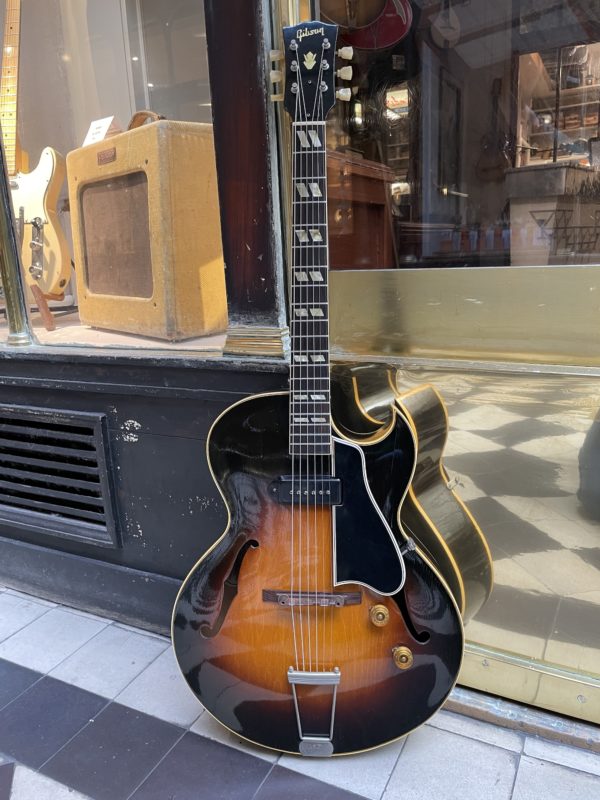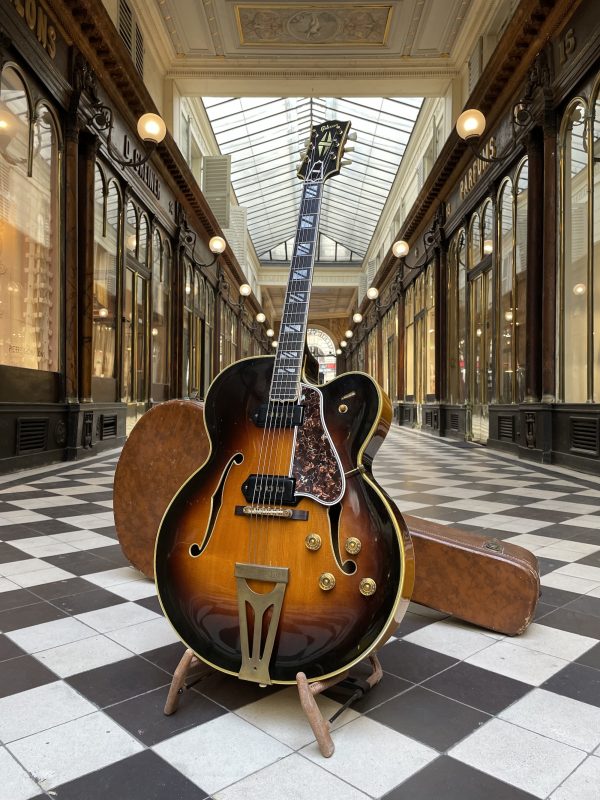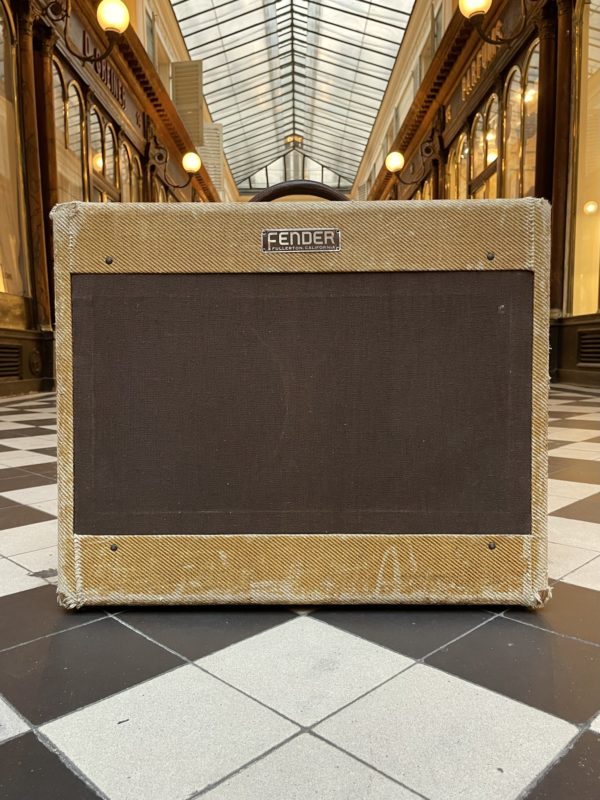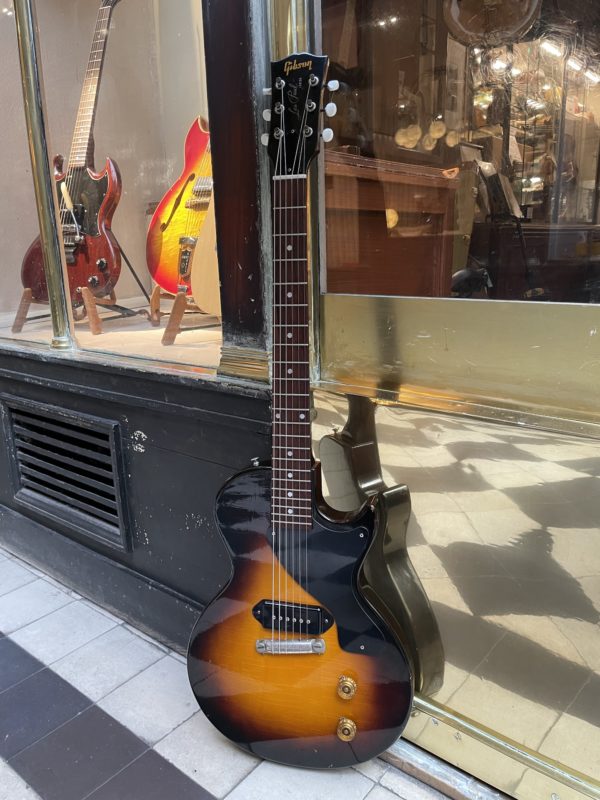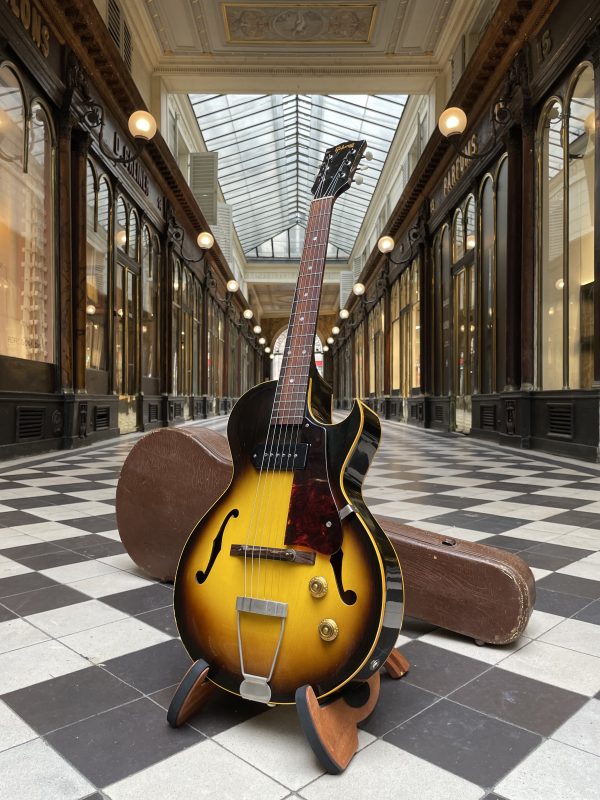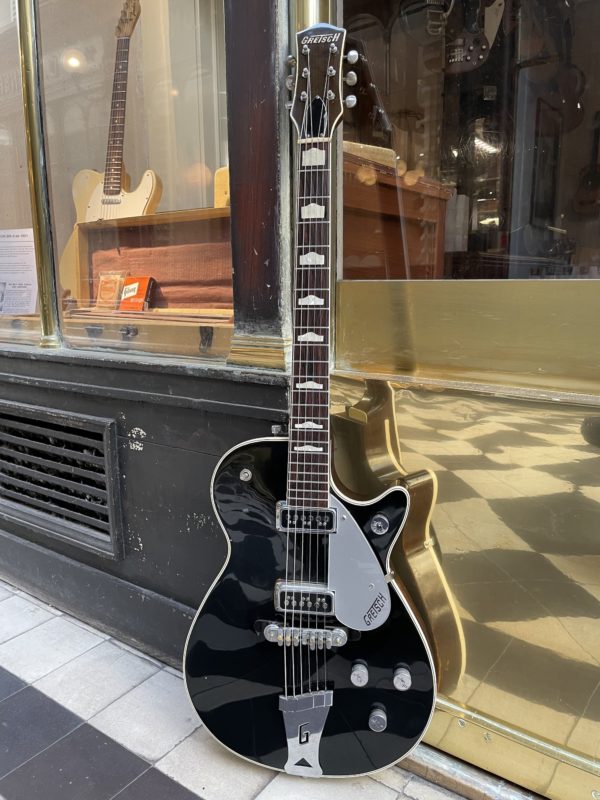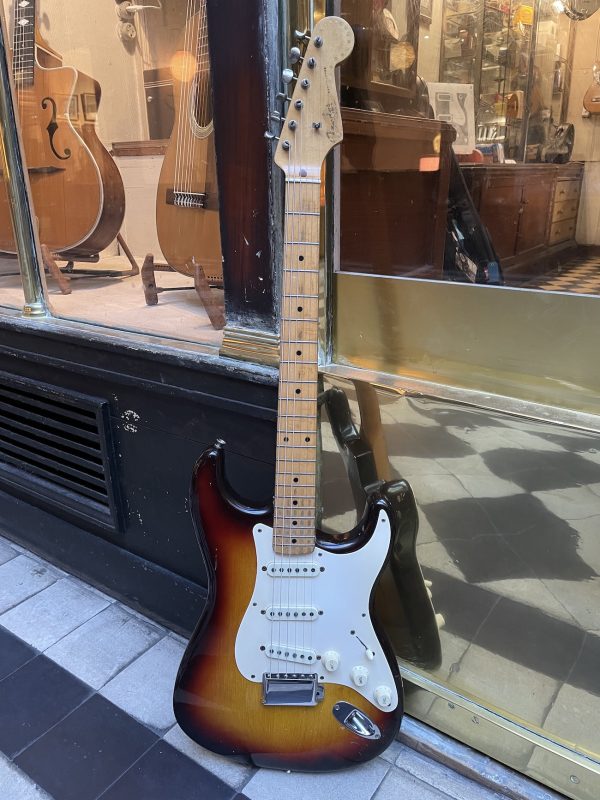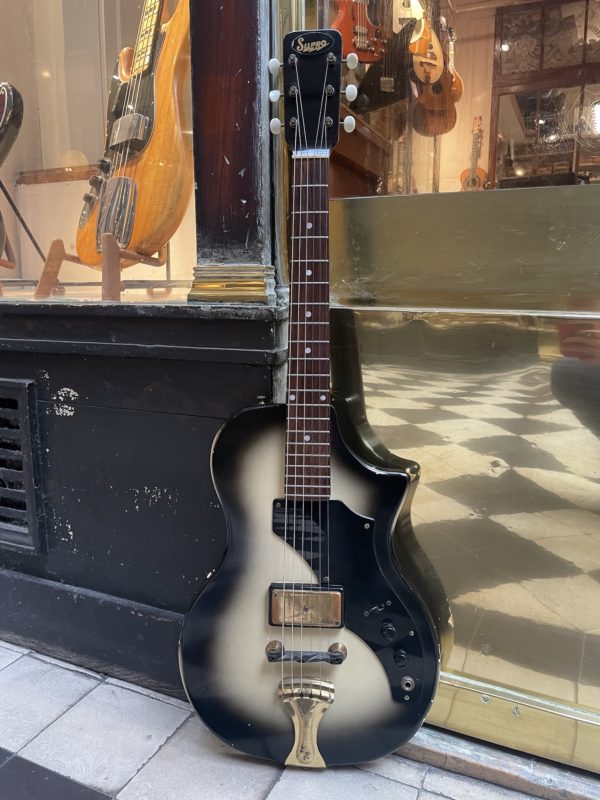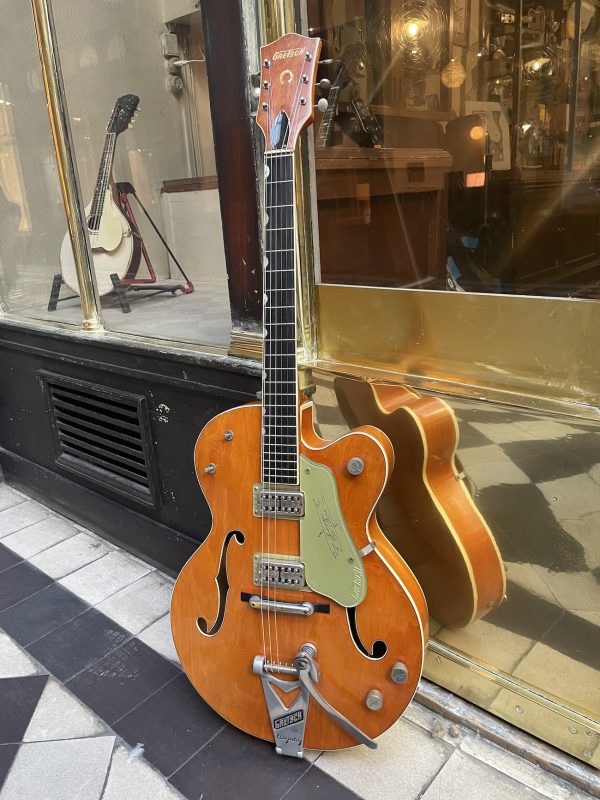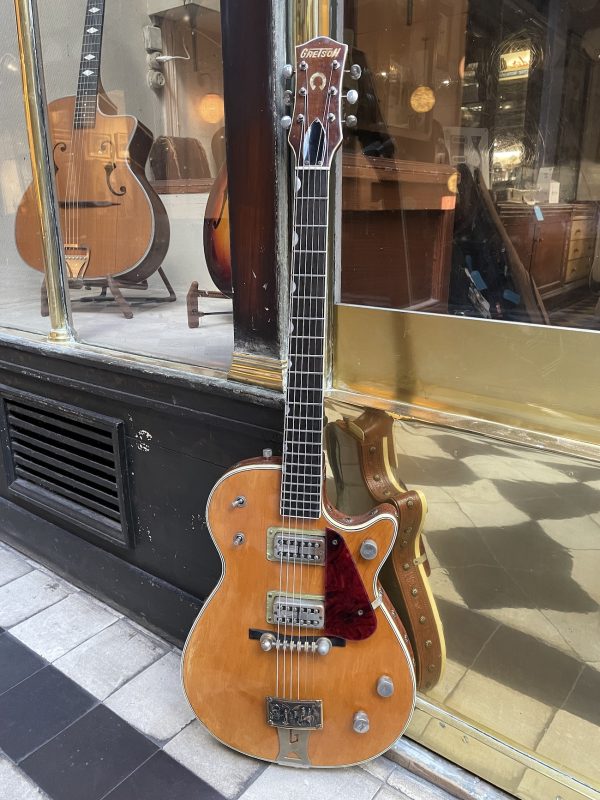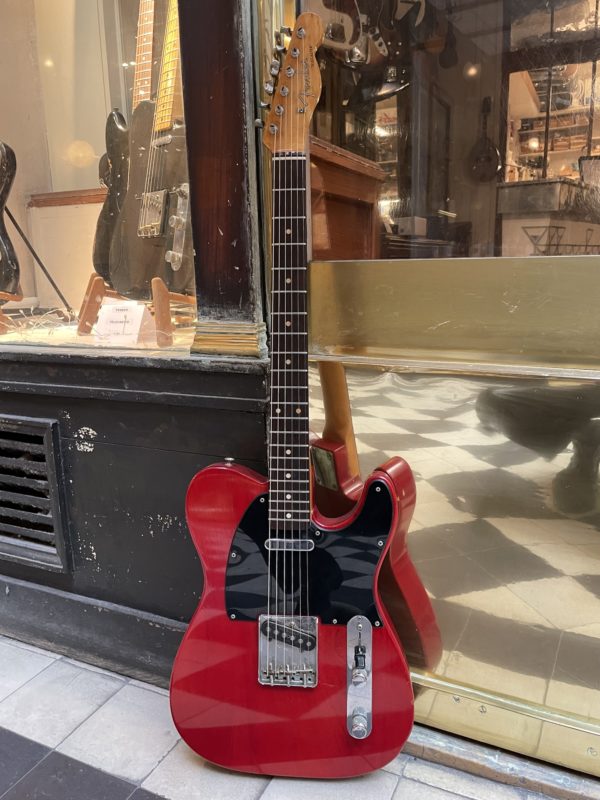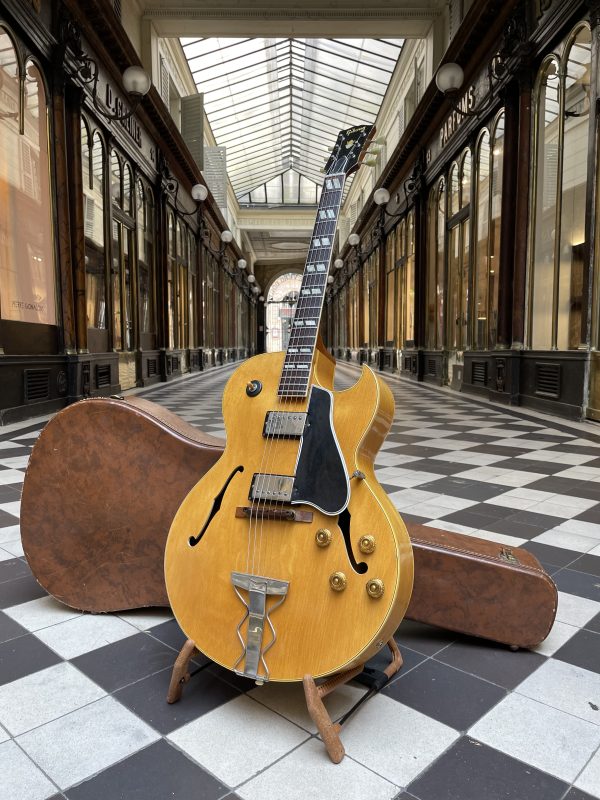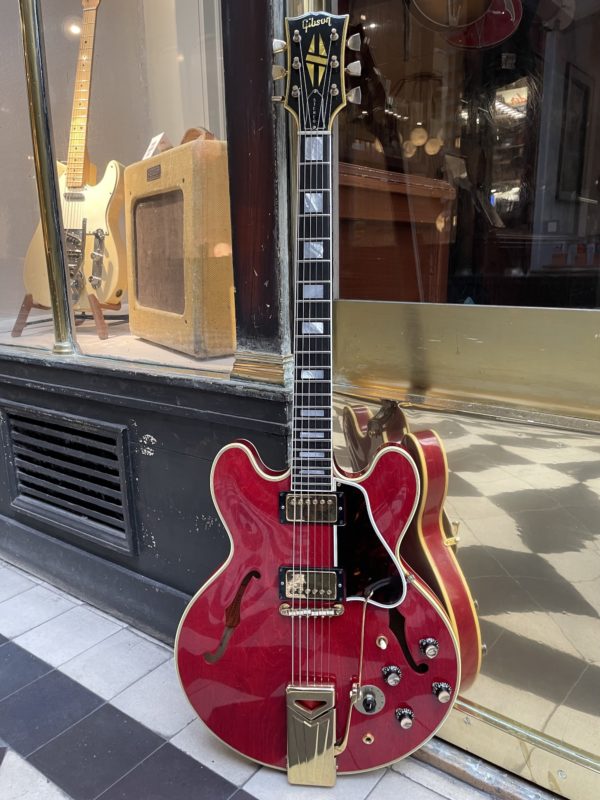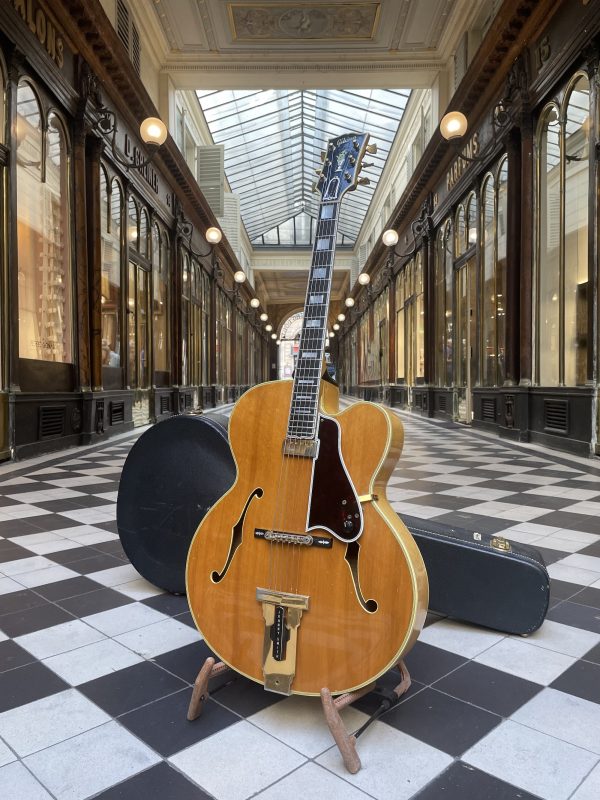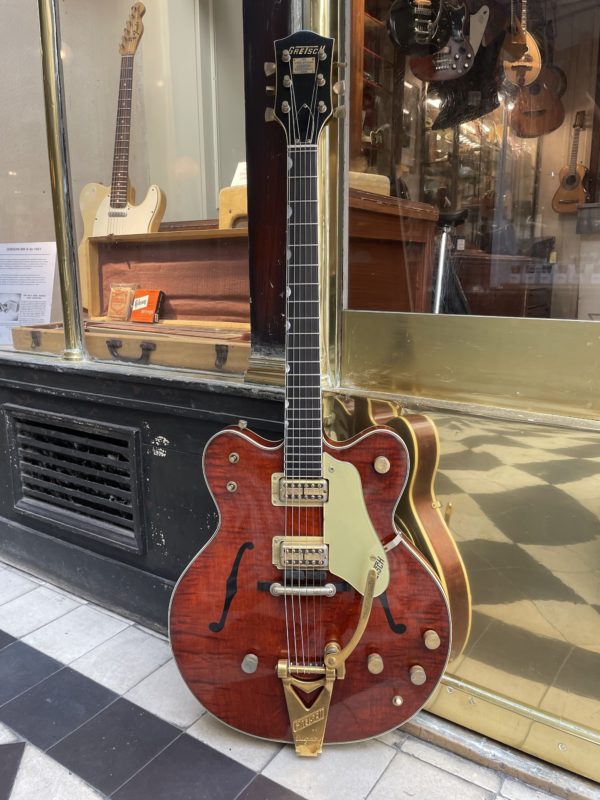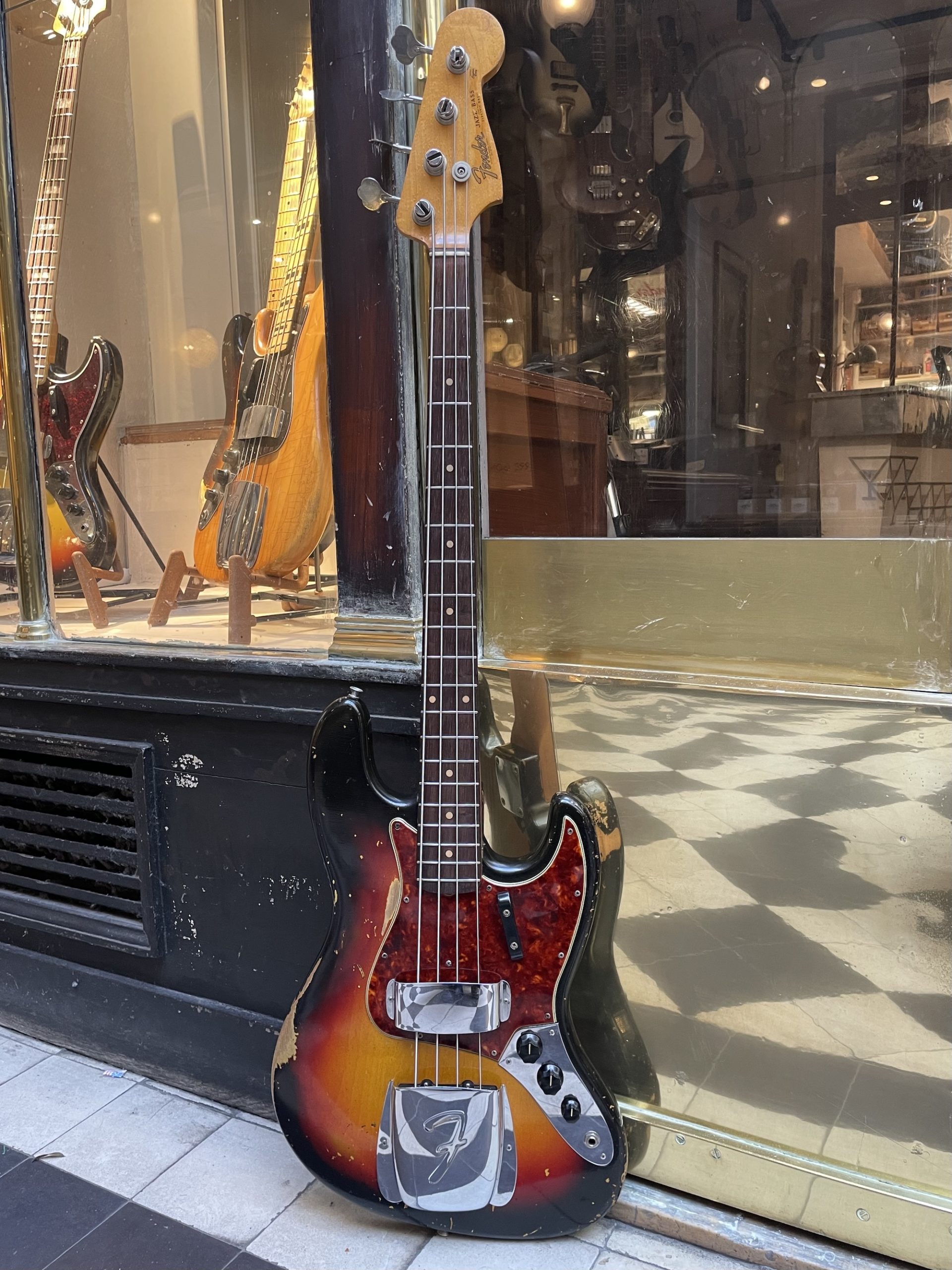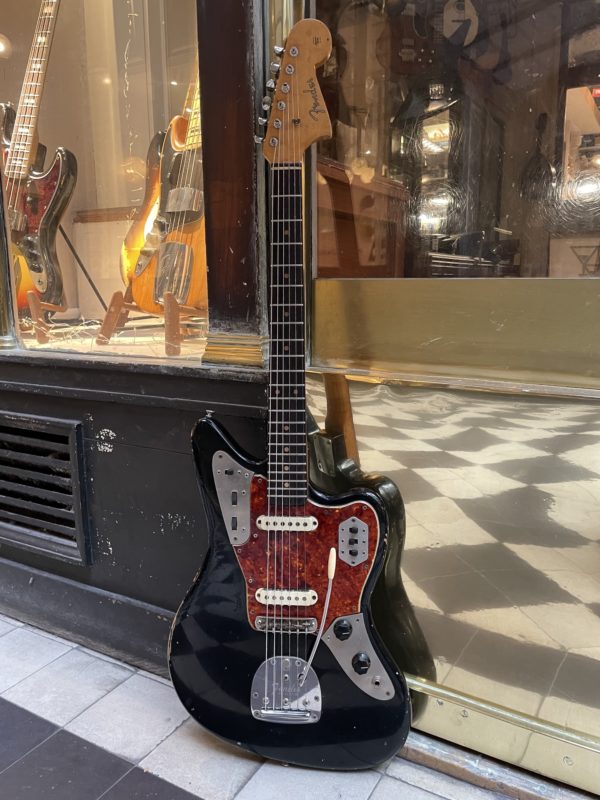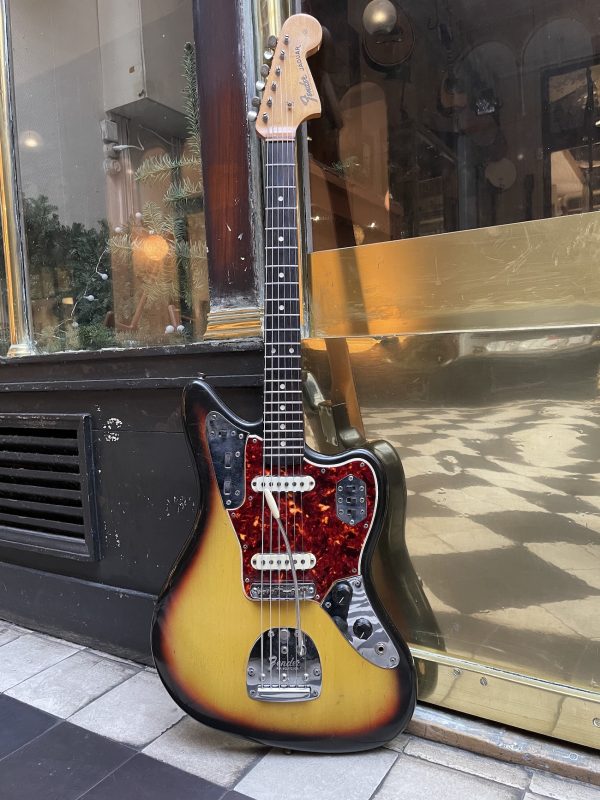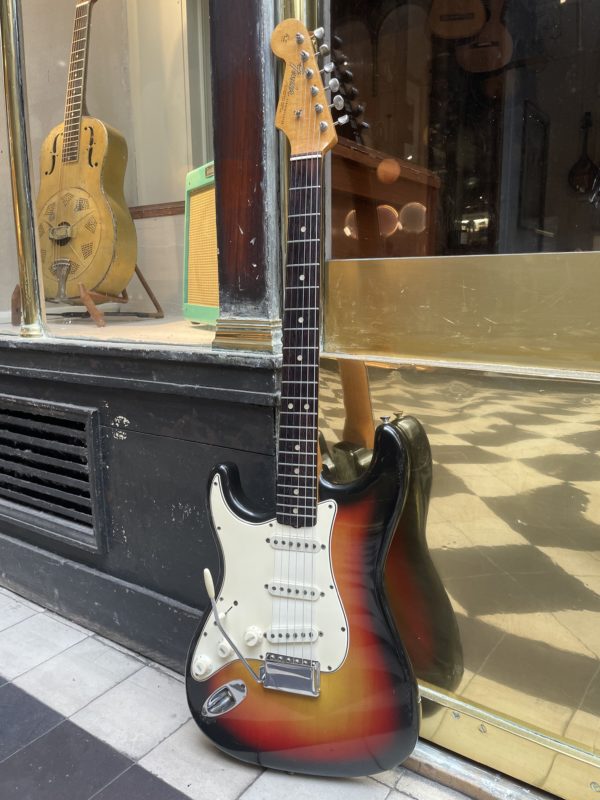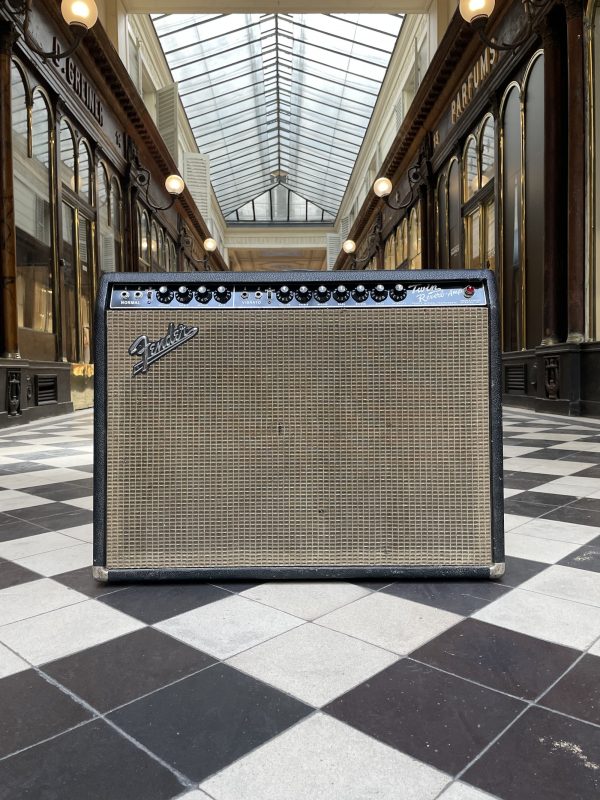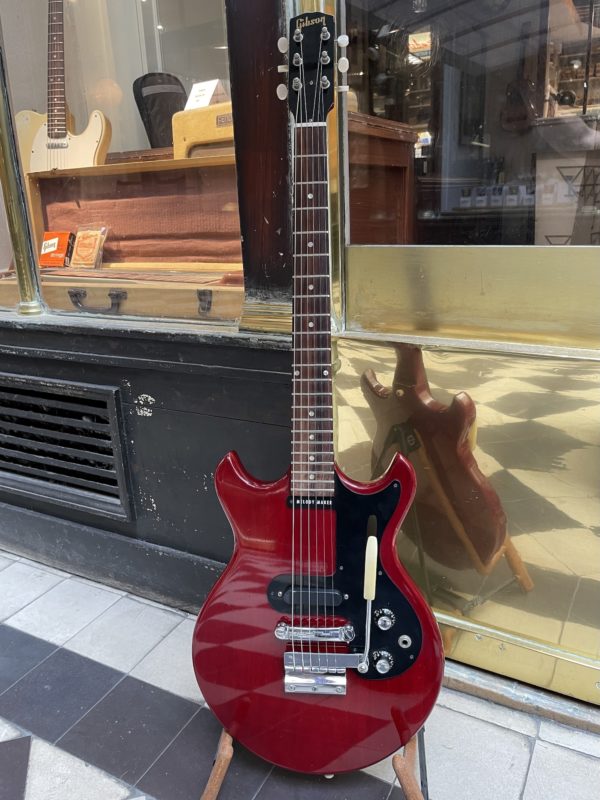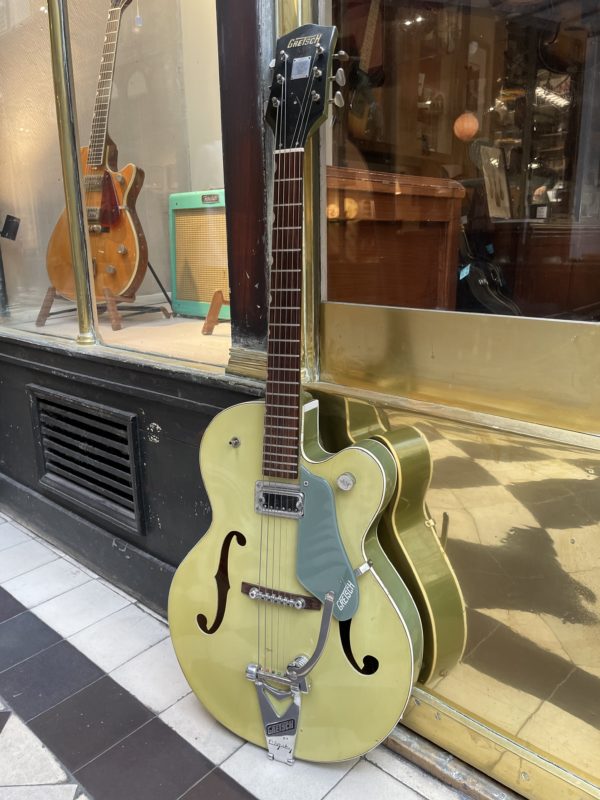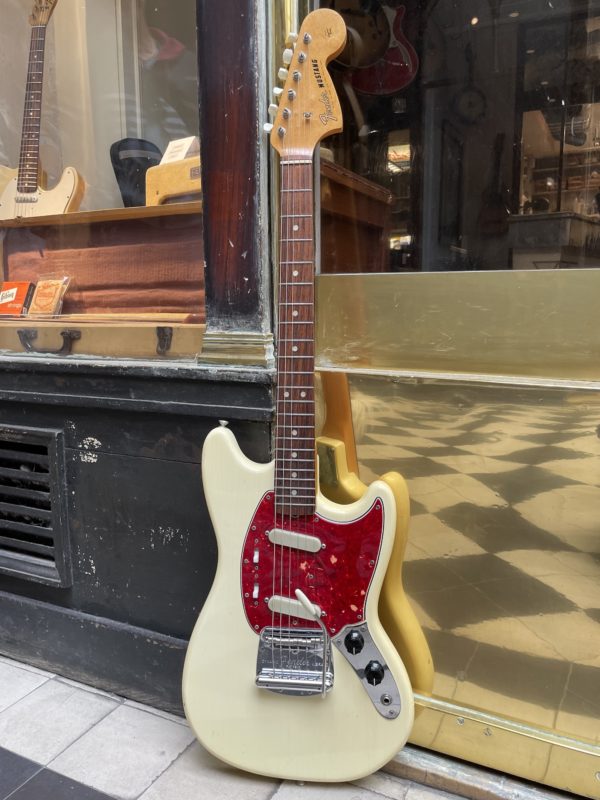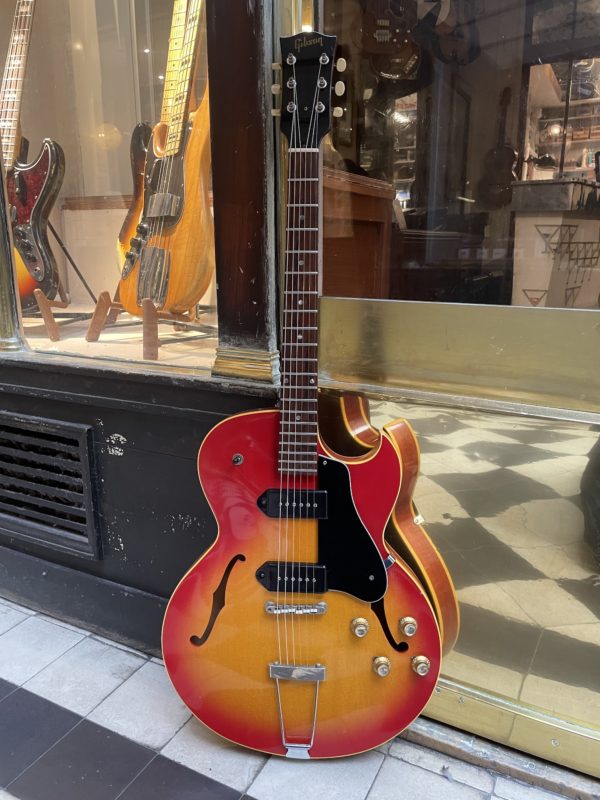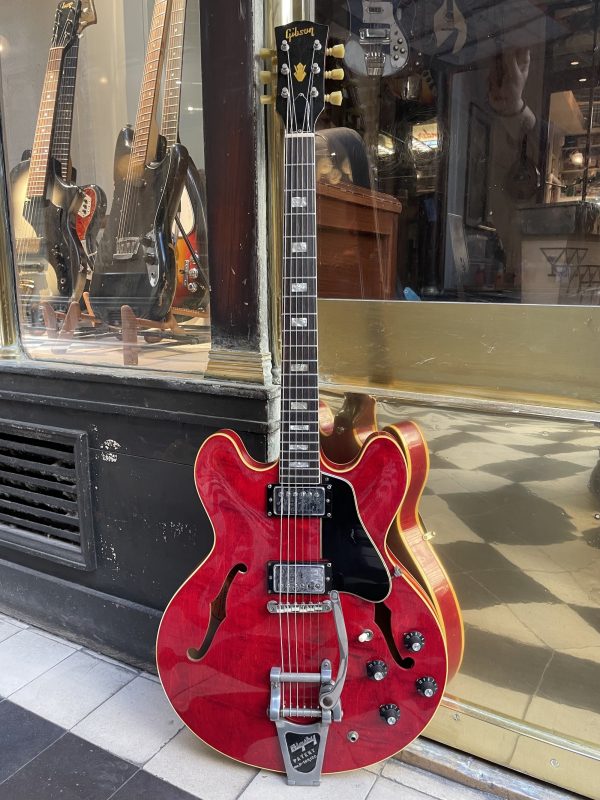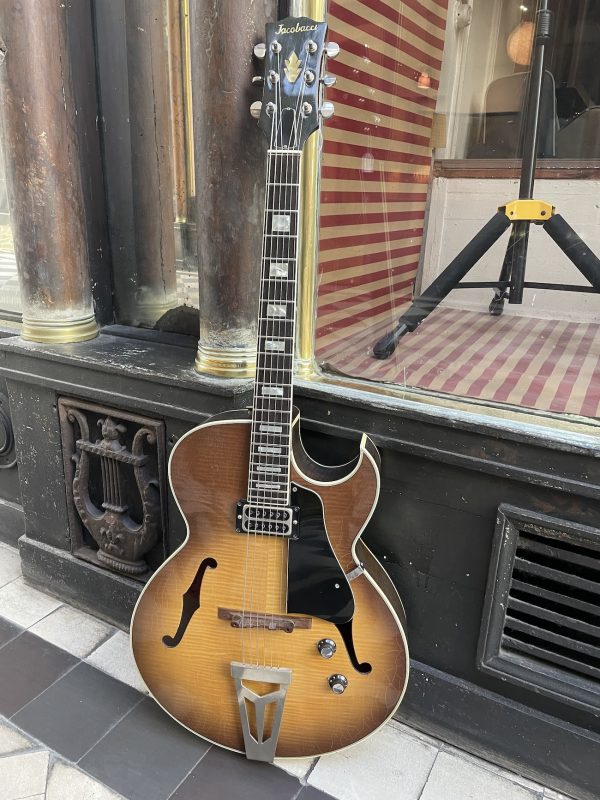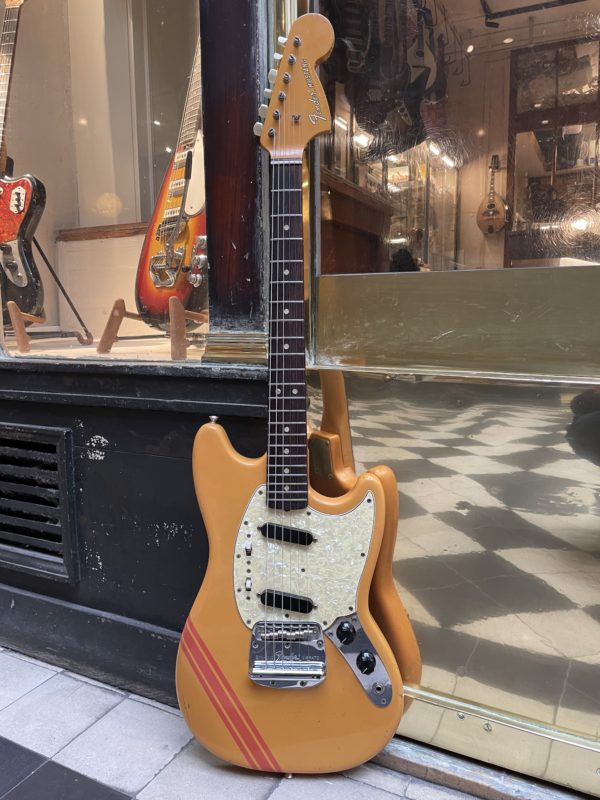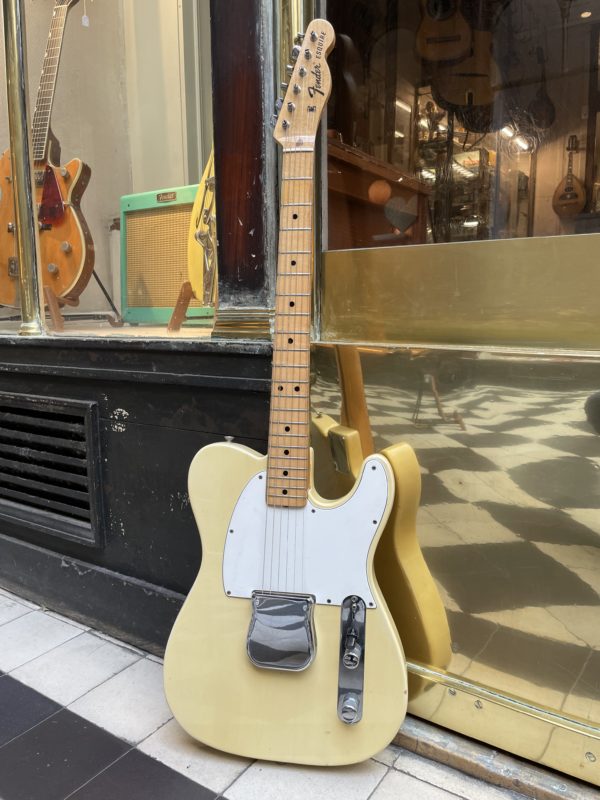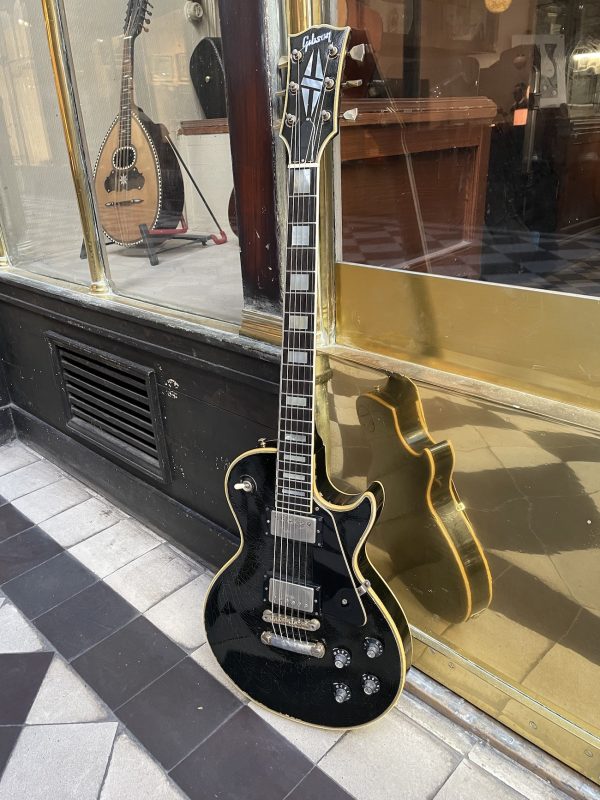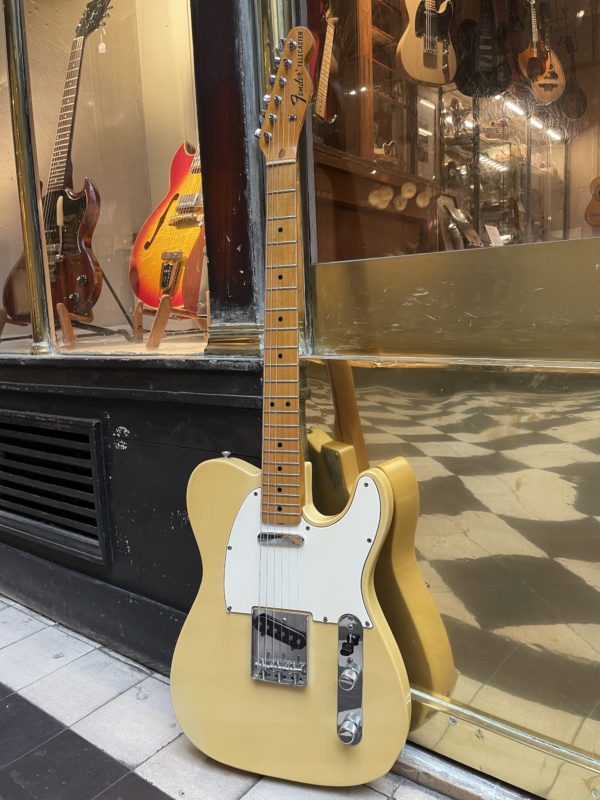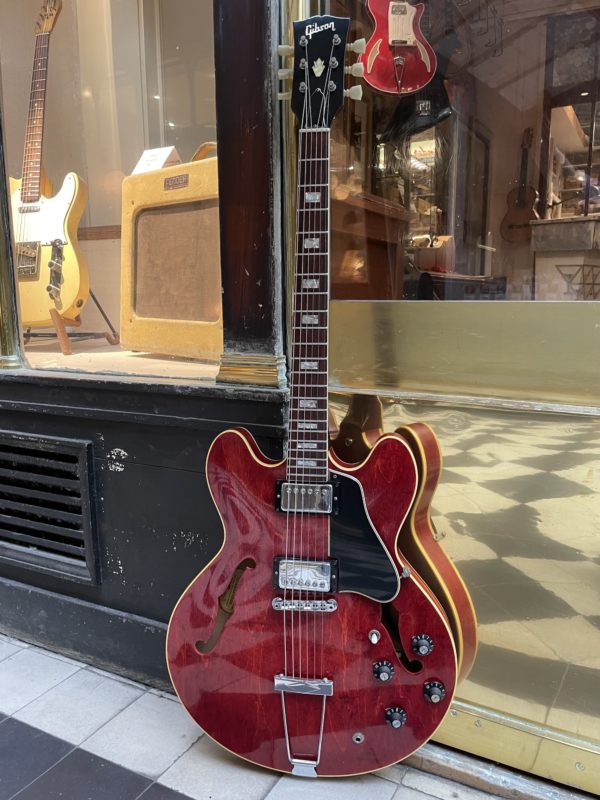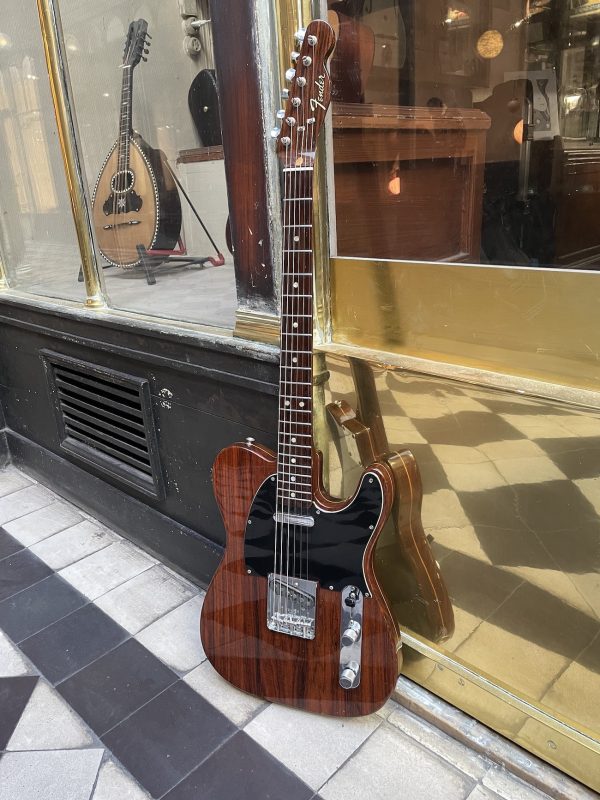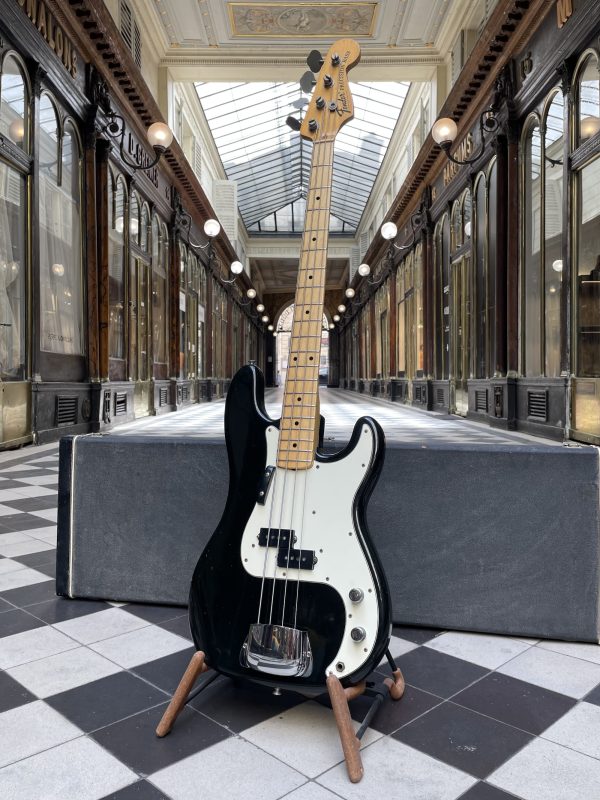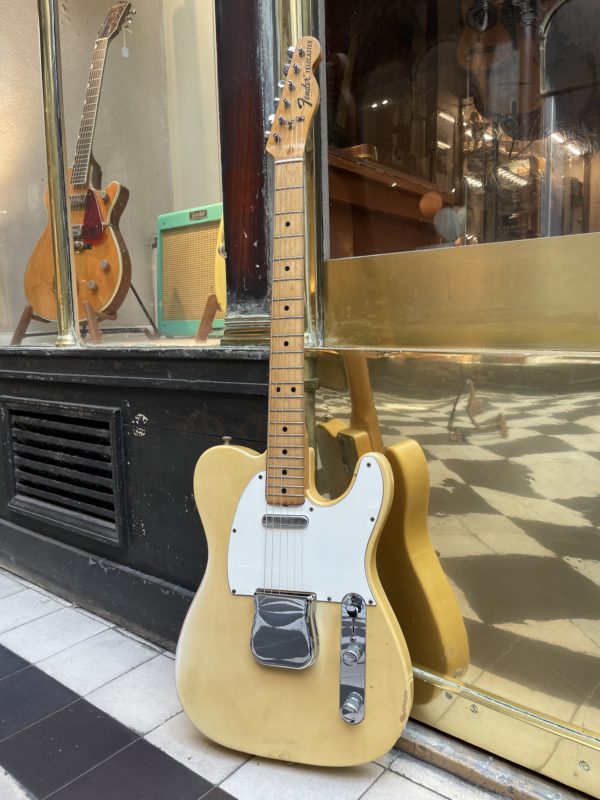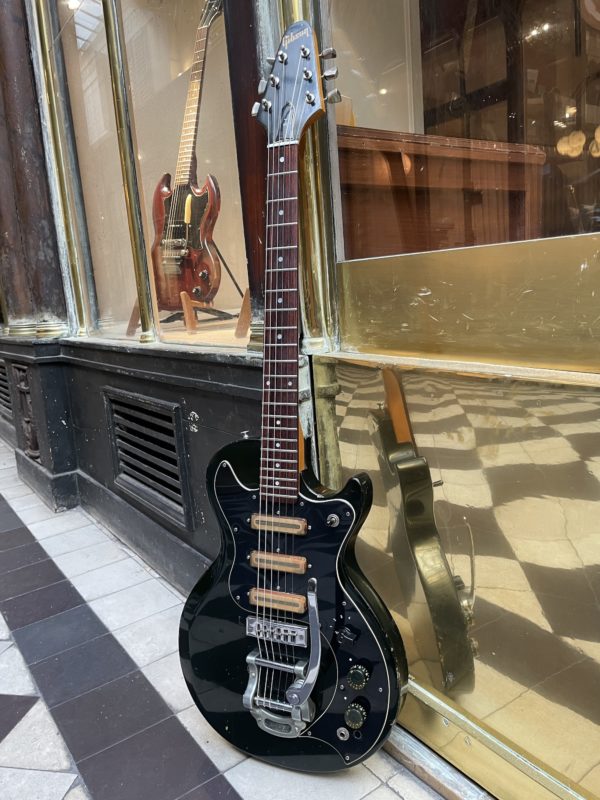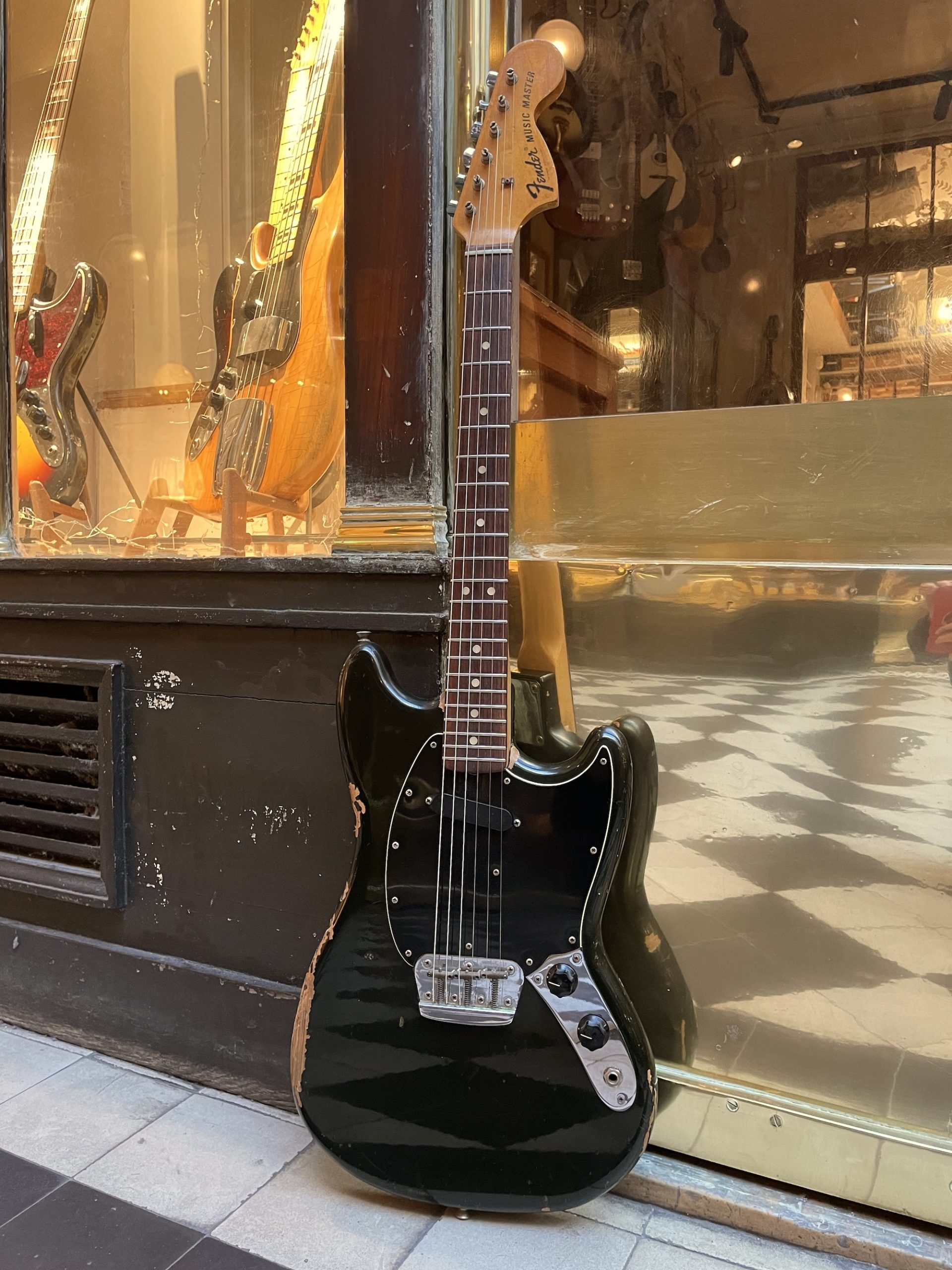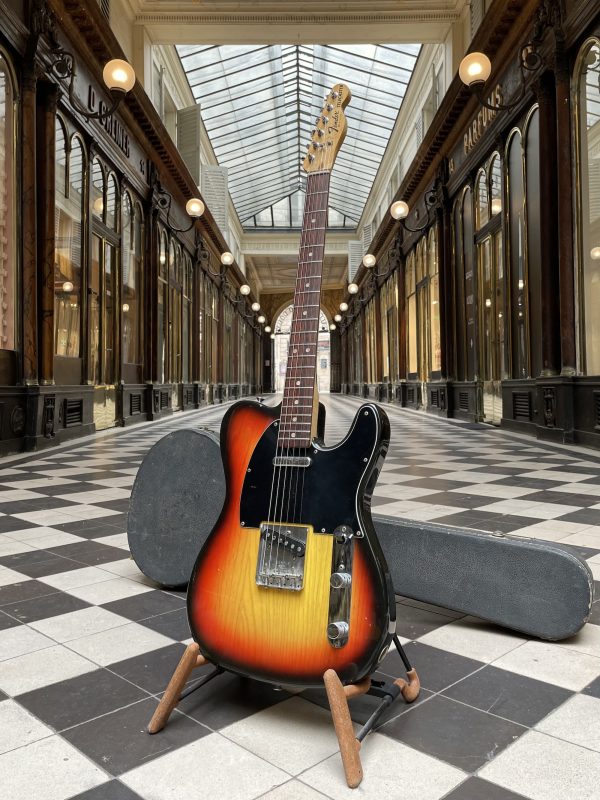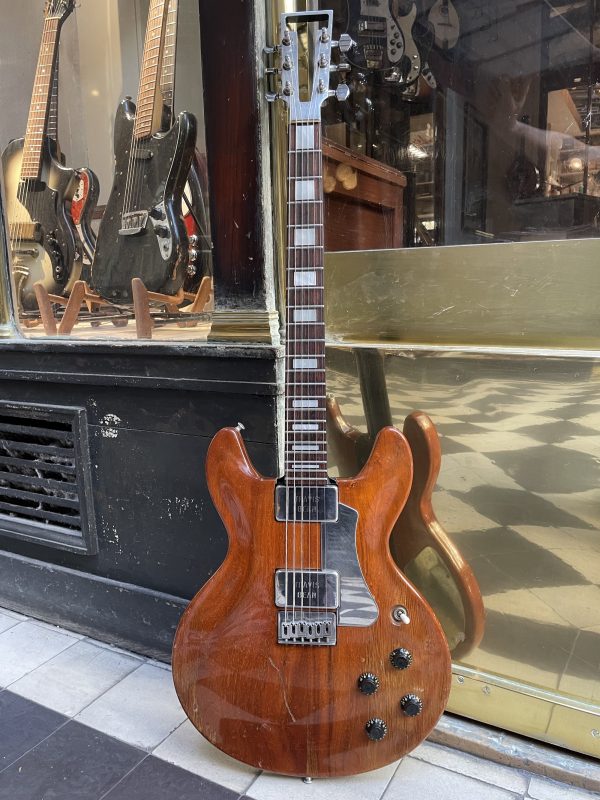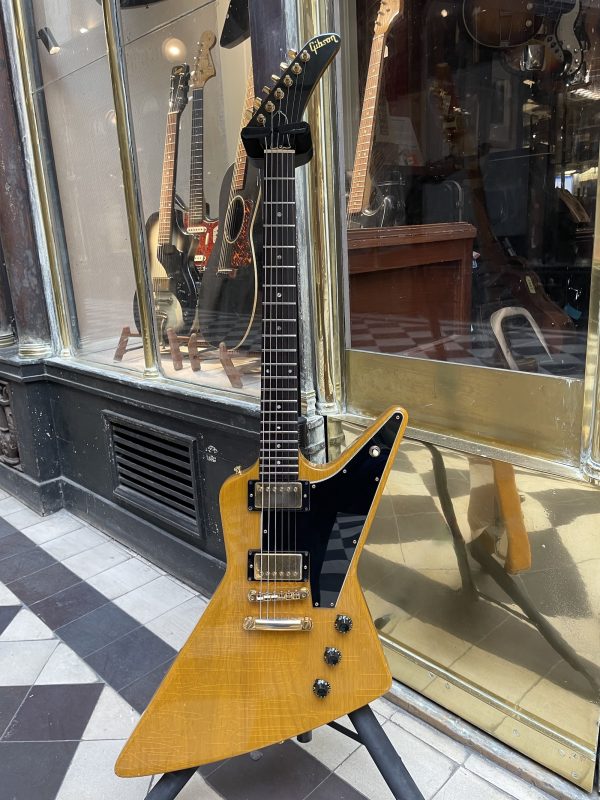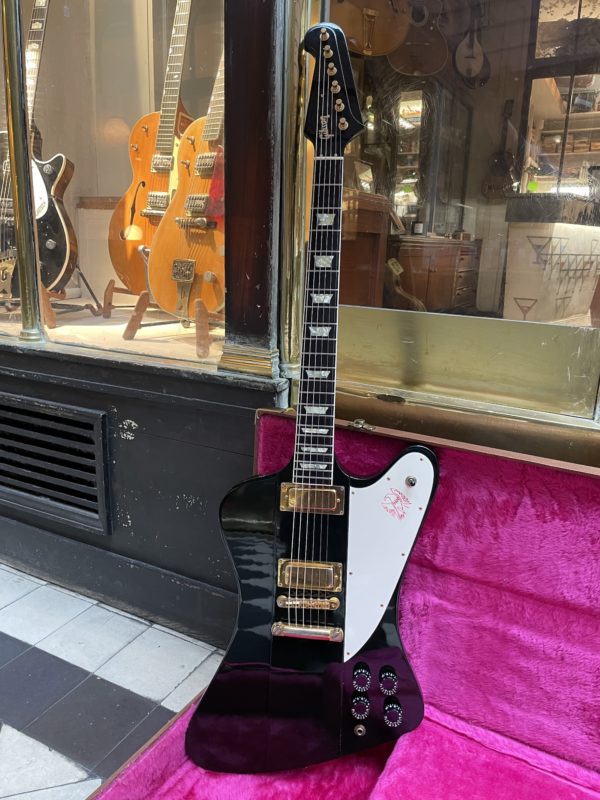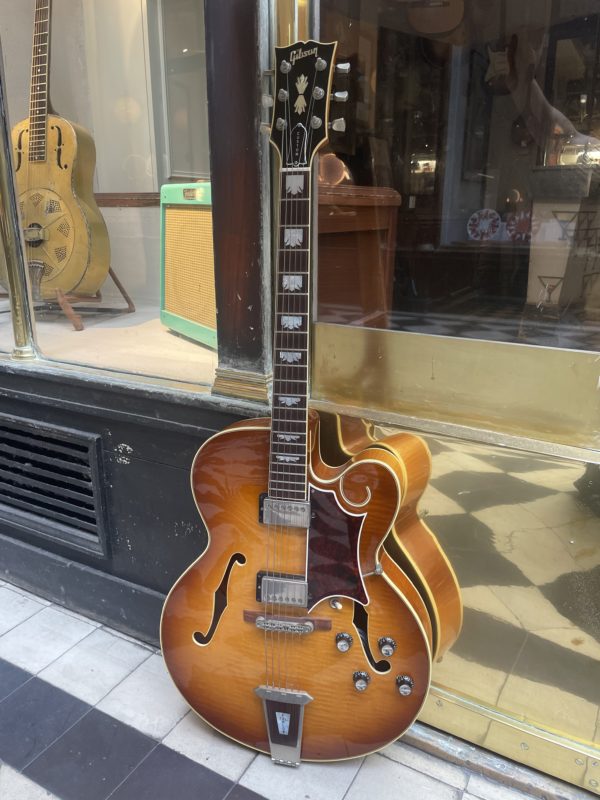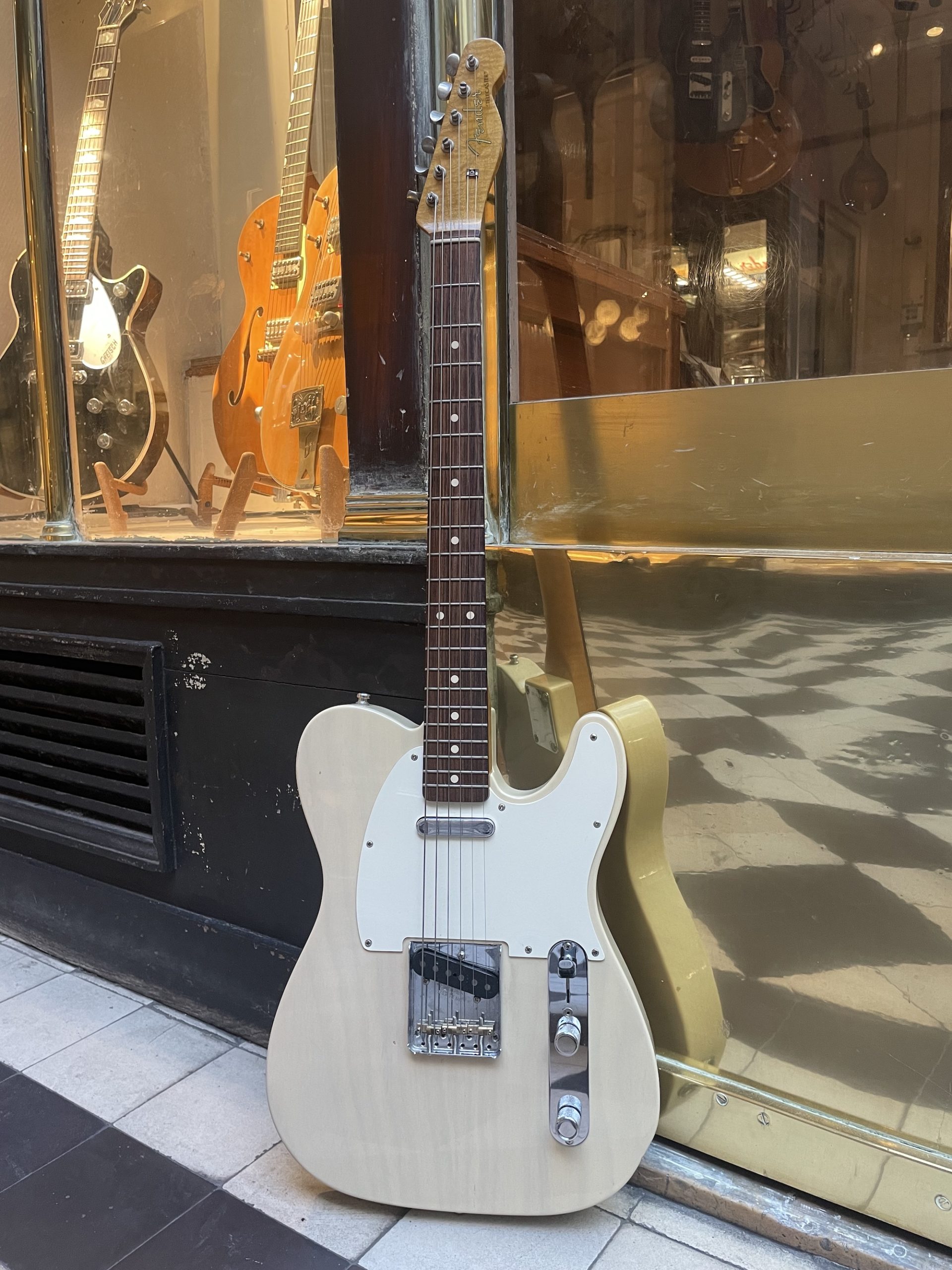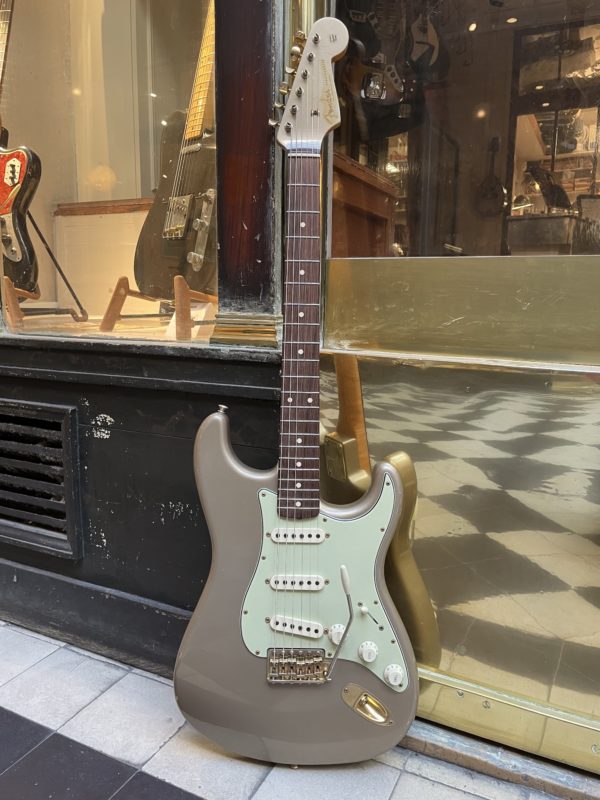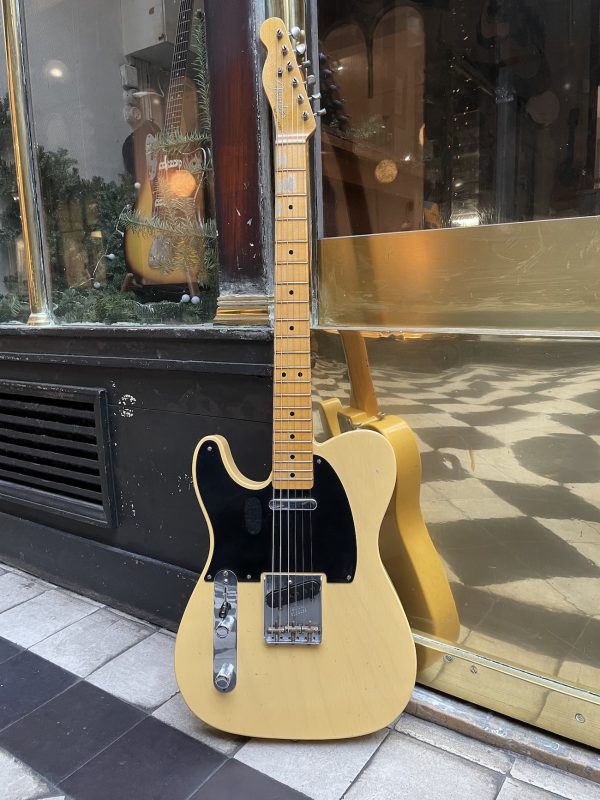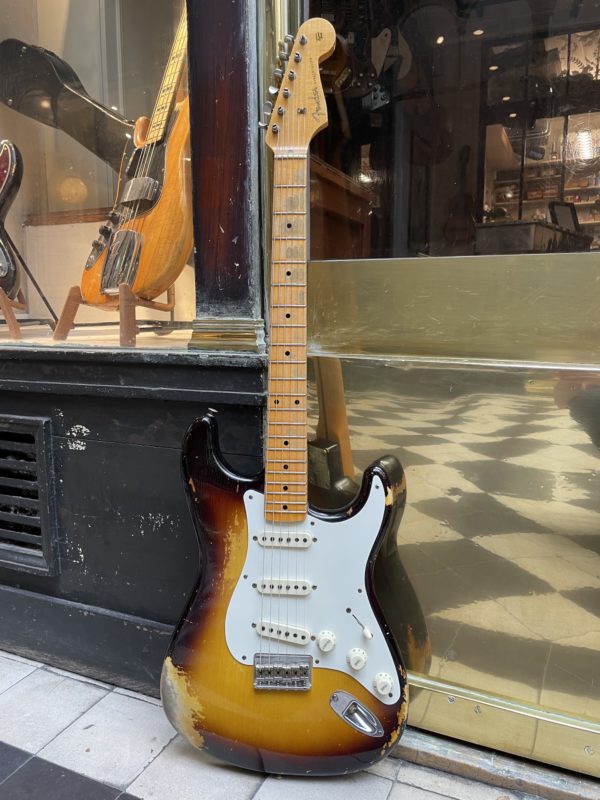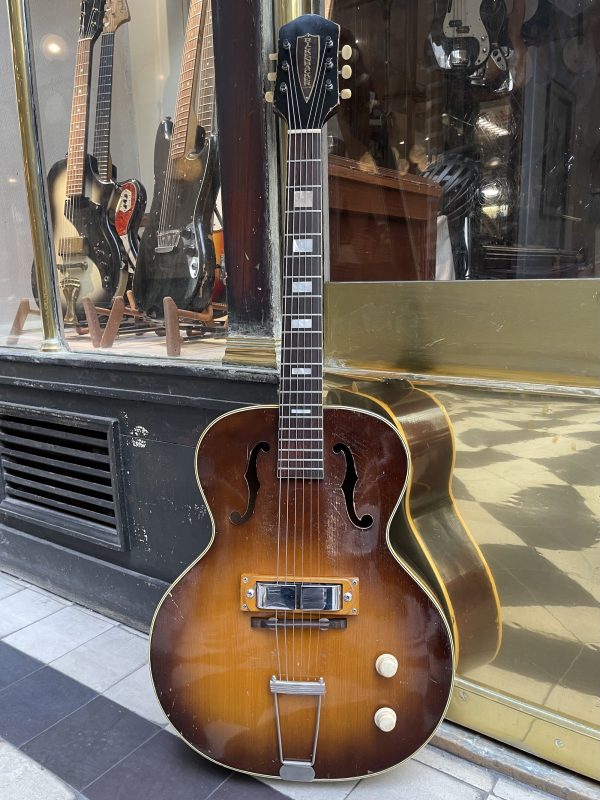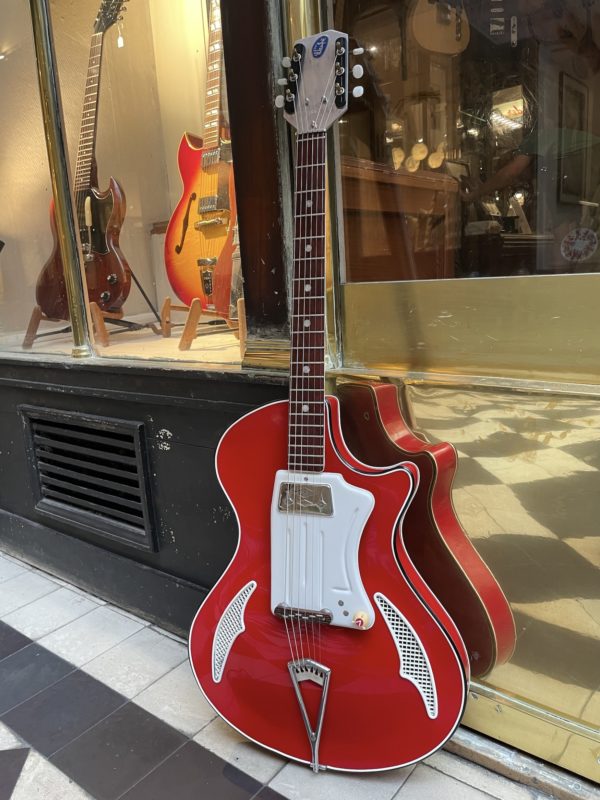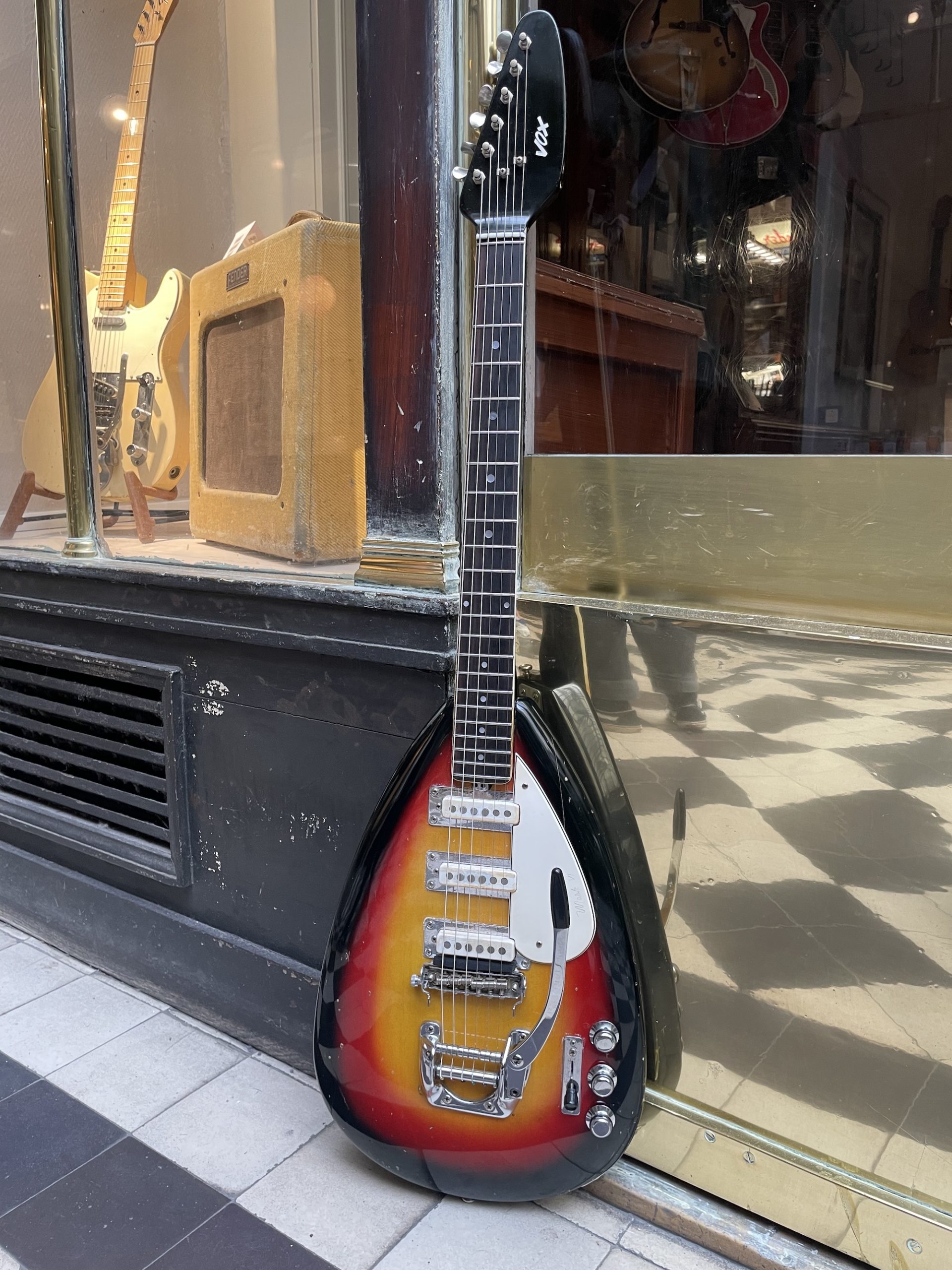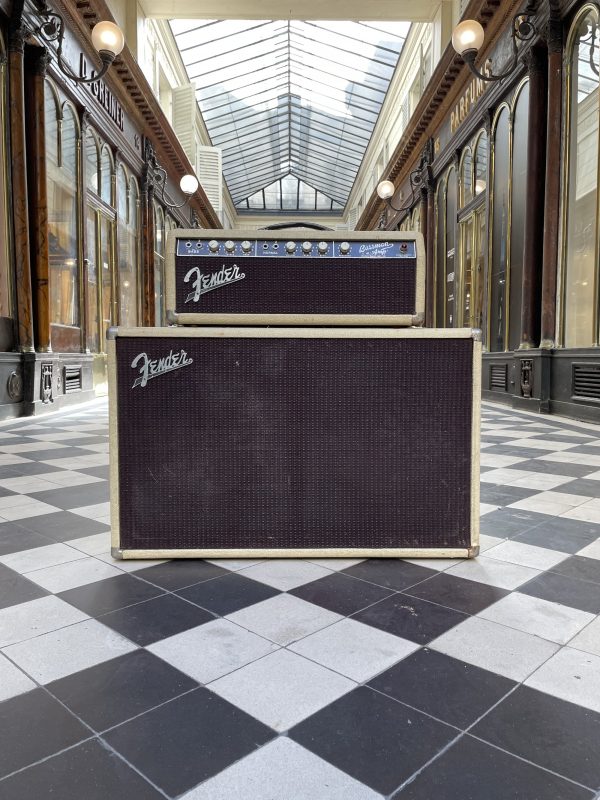Electrics
1957 GRETSCH 6128 DUO JET
1958 FENDER STRATOCASTER
1959 GRETSCH 6120 CHET ATKINS
1959 GRETSCH 6130 ROUNDUP
1960 GIBSON ES-175DN
1969 GIBSON LES PAUL CUSTOM – EX – RICHIE FAULKNER (JUDAS PRIEST)
1971 FENDER TELECASTER ROSEWOOD
1997 GIBSON TAL FARLOW CUSTOM
Electric guitars by type
Electric guitars by brand
THE ELECTRIC GUITAR
“Guitar and electricity” is a legendary association in the popular music of 20th century North America, and actively feeds the modern myth of an “American Golden Age”. It is at the heart of a cultural, economic, social, and to an extent, even political movement – notably Jimi Hendrix (1942 – 1970)’s interpretation of The Star Spangled Banner – which has reached far beyond the US borders and the strict framework of organology (the science and history of musical instruments) and musicology (the science and history of music).
Starting from the early 20th century and in accordance with musical creativity in the “New World”, instrument making was oriented towards the electrical amplification of several musical instruments, including the church organ, quartet instruments but also guitar, in order to solve limitations tied to these instruments’ inherently low volume output. This emerging industry quickly adapted to a variety of new playing contexts for guitar, namely alongside wind instruments and drums, but also to increasingly spacious recording studios.
First to appear were hollowbody amplified guitars, named after their hollowed-out body construction, followed by solidbody electric guitars, which are built from a solid slab of wood. In the beginning, the electric guitar was created through the process of research aiming to amplify the sound of acoustic guitars, while preserving as much of their natural sonic characteristics as possible. It was a simple epiphenomenon of this process, while most of the focus was on methods of “mechanical” amplification of the acoustic instrument. These methods had already been greatly explored, and led to a number of inventions: the archtop guitar, built by Gibson or Epiphone, D’Angelico or Stromberg, where the curvature of the top was obtained either by carving the wood or by pressing it into shape; the wide body guitar, built by the same manufacturers but also Martin or the Larson Brothers, whose enlarged body allowed for greater sound projection; and finally the resonator guitar, equipped with an internal resonator made of wood in the case of the Selmer guitars or from metal for instruments made by Dobro or National.
However, electrical amplification introduced a whole new paradigm, with nearly infinite variations of power and sound textures, coupled with the adaptability and versatility specific to guitars. The inherently electric quality of the solidbody guitar allowed it to make its voice heard in all sorts of musical contexts and idioms. It has established itself as an instrument in its own right and at the forefront of several musical movements, leading to the creation of new playing techniques as well as new repertoires, with multiple aesthetic dimensions.
If we take a closer look, the first tangible attempts to mass-produce an electrically amplified steel string instrument date back to around 1924 and the work carried out by Lloyd Loar at the Gibson company. However, his ideas were considered unviable by the company’s sales department, who questioned the existence of a market for the sale of such instruments. In the end, it is through the Hawaiian music scene that perspectives started changing, with Hawaiian lap steel guitars – which musicians place on their knees and play using a slide – being the first to be mass-produced with an integrated electromagnetic pickup. The inception of the first amplified Hawaiian guitar is owed to engineer Adolph Rickenbacker (1886-1976), who worked for the National-Dobro company, whose endeavors lead to the marketing of the very first amplified guitar in 1931 which was met with an immediate success. A year later, again from Rickenbacker, the first amplified traditional guitar with metal strings is introduced, produced in small batches until 1935 in the form of an archtop under the name of Electro-Spanish. Less convincing than its Hawaiian alter ego, with its bulky “horseshoe” – style pickup in the bridge position high above the strings, it never reached commercial success. It was the great Gibson company, well seasoned in terms of qualitative and quantitative productions, that took over the electric guitar market in 1935 with the debut of their Gibson ES-150 and Gibson ES-250 models, popularized by legendary jazz guitarist Charlie Christian (1916-1942), who was playing in Benny Goodman (1909-1986)’s orchestra at the time. The success of this musician was so great – in the history of jazz in particular and of guitar in general – that we still associate his name with that of the Gibson ES-150 model to this day, down to the very microphone which is nicknamed the “Charlie Christian”. The main advantage of the Gibson ES-150 over its competitors, in addition to a far more elaborate construction, resides in the high quality of its microphone, created by Walter Fuller at Gibson, and in its positioning below the fingerboard, giving it a round and warm sound. « Blood does not lie », and this historical and legendary guitar has made its mark of particular relevance in terms of its design and electrical musicality.
So goes the official story of the electric guitar. If we go a little deeper into the lives on the musicians who used them, in particular jazz guitarists who needed amplification to perform in large orchestras, we quickly realize that these people were pushing the idea of an amplified guitar long before the small world of the instrument-making business took interest and got invested in it. The eminent Georges Barnes (1921-1977), Floyd Smith (1917-1982), Bus Etri (1917-1941), Eddie Durham (1906-1987) and – perhaps the most proactive in the field – Les Paul (1915-2009) all played a form of amplified guitar in public before any model was marketed. All of them recall stories of record player heads with their needles driven into guitar tops, microphones crudely installed through the cut-out bottom of a beautiful archtop, sacrificed on the altar of Progress. On the studio side of things, it is to Eddie Durham that we owe one of the first (modestly) amplified solos on the resonator guitar, amplified by an electromagnetic microphone, on the historic recording of Hittin’ the Bottle in 1935 alongside Jimmie Lunceford. The same Eddie Durham – a hallmark name – who will later place an electric guitar in the hands of Charlie Christian for the first time.
After the Second World War, it was under the influence of urban blues, rhythm and blues and popular music known as pop, that the range of amplified guitars – up until then all hollowbody – underwent a major evolution, giving birth to the purely electric solidbody guitar, thus solving both the feedback problems inherent to amplified hollowbody and allowing you to play at much louder volumes.
Of all the pioneers in this area, Paul Bigsby (1899-1968) was undoubtedly the most intelligently creative, and the instruments he designed for country-western musician Merle Travis (1917-1983) would greatly inspire the man who permanently established he electric guitar in the pages of history, Leo Fender (1909-1991). Fender took the lead both in terms of design of this type of instrument and in his approach to mass-production with his first Fender electric models: the Fender Esquire, Fender Broadcaster, Fender Telecaster first, then the Fender Stratocaster, Fender Jazzmaster, Fender Jaguar, Fender Mustang, Fender Precision Bass, Fender Jazz Bass, Fender Electric XII, Fender Bass VI. All the big brands and legends of the solidbody guitar ended up invariably being followers of the Fender powerhouse, starting with Gibson but also Gretsch or Rickenbacker. We can cite for example at Gibson the range of models named after popular jazz musician Les Paul, such as the Gibson Les Paul Gold Top, Gibson Les Paul Sunburst, Gibson Les Paul Junior, Gibson Les Paul TV, Gibson Les Paul SG.
If the hollowbody electric guitar led to some of the greatest hours of the jazz sound, the solidbody was not successful within this sphere. However, we can cite a few anecdotal collaborations, albeit quiet and short, between Jimi Hall (1930-2013) and a Gibson Les Paul Custom Black Beauty or Joe Pass (1929-1994) on a Fender Jaguar. The solidbody electric guitar immediately appealed to more rural popular music like country, country-western and hillbilly style. We must pay tribute to the pioneering musicians who hopped on this train towards modernity: starting with the “Pope” Merle Travis, the exceptional Jimmy Bryant (1925-2014) – the author of the famous song Guitar Boogie recorded in 1945 in which he too will adopt a solidbody Fender Telecaster in 1952.
In France, the emergence of the electric guitar led to an odd linguistic invention that we still hear today in the mouths of many guitarists, even the youngest: in the 1950s, the electric guitar was opposed to the acoustic guitar by naming it “dry” guitar (guitare “sèche”). Maybe to imply that acoustic guitar was lacking in the “juice” department.
ABOUT ELECTRIC GUITAR PICKUPS
The pickups of the electric guitar are somewhat different from other types of microphones in that they are strictly speaking transducers or electromagnetic sensors whose technology is closer to that of the dynamo on a bicycle. The frequency bandwidth that characterizes electric guitar pickups the most is the medium frequency band, the guitar being an instrument which is already acoustically rich in those frequencies. If the pickups were to highlight too much bass frequencies, the guitar would disappear in the mix as soon as a bassist or a double bass player plucked a string; a pickup with too much of a cut in the midrange would be eaten alive by any keyboard sound; as for a pickup that doesn’t tone down the natural treble content of the instrument’s sound, there is a chance that it will be received by an audience with about the same leniency that one grants a beginner violinist. In other words, aside from a few exceptions that have long since fizzled out, the “sound design” of all guitar pickups is oriented towards a sound aesthetic that adheres to the natural positioning of the guitar in the “mix” of ensembles in jazz, pop, folk, rock music. Only electric basses have pickups with a wider bandwidth, even designed towards hi-fi sound in the case of more modern instruments.
Purely acoustic instruments are most often equipped with pressure sensors or piezo-electric transducers made from quartz cristal, sometimes electret microphones and even electromagnetic sensors specifically tailored to render a faithful acoustic image. In all these cases, the aim is to restore a virtual image of the acoustic sound, which sometimes requires combining several of these technologies on the same instrument. This is quite a different approach from that of the electric guitar, except perhaps for Leo Fender, whose work and lifetime obsession with research and development was aimed in a way at rendering the sound of an acoustic Martin through his electric creations, from his first Fender Esquire, Fender Broadcaster and Fender Telecaster models all the way to Music Man and G&L guitars, as well as his entire range of amplifiers through which he strived to eliminate all natural distortion. From this perspective, we can put forward the idea that the Fender Telecaster is an “analog model” of a Martin dreadnought, in other words, the last avatar with reduced acoustics on which Fender worked to render a natural acoustic sound.


